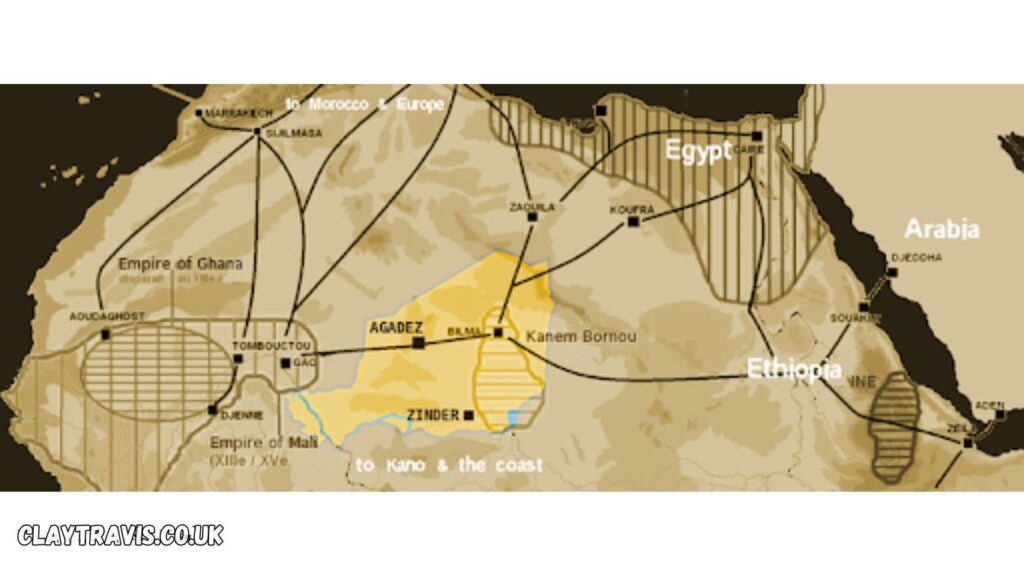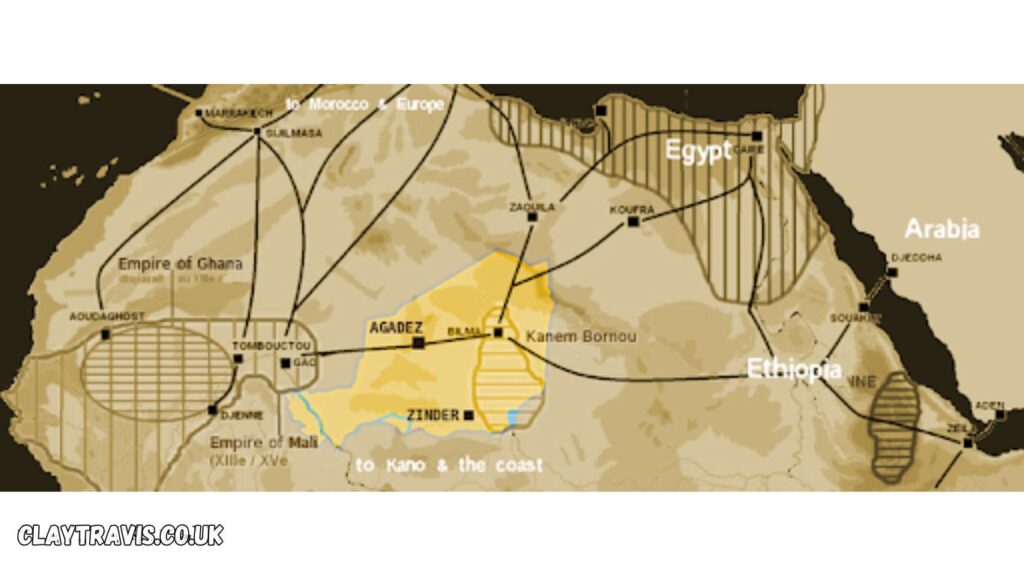Discover how the Hanseatic League influenced the Silk Roads through trade, cultural exchange, and economic strategies. Explore their impact on global commerce and lessons for today.
Table of Contents
The Hanseatic League, a powerful confederation of Northern European merchant guilds and market towns from the 12th to the 17th century, played a pivotal role in shaping global trade during the Middle Ages. Though the Silk Roads—an extensive network of trade routes connecting the East and West—were geographically distant from the Hanseatic hubs, their existence and the Hanseatic League’s rise had nuanced yet significant interactions.
This blog unravels the connections between these two monumental trading systems, examines their overlapping influences, and offers actionable insights into how these historical developments can guide modern thinking about global trade networks.
The Hanseatic League and the Silk Roads: A Quick Overview
Before delving into the connections, let’s understand the basics of each system:
What Was the Hanseatic League?
The Hanseatic League emerged in the late 1100s as an economic alliance of towns along the Baltic and North Seas. It focused on facilitating and protecting trade routes across Europe, ensuring members benefited from lower tariffs and mutual protection against piracy and war. Key products traded included:
- Wool and textiles
- Grain and salted fish
- Timber and tar
- Luxury goods like furs and amber
What Were the Silk Roads?
The Silk Roads, active from antiquity into the Middle Ages, spanned over 7,000 miles, linking China, Central Asia, the Middle East, and Europe. Goods traded included:
- Silk, spices, and tea from the East
- Precious metals, glass, and wool from the West
These routes were not merely about physical goods but also facilitated the exchange of ideas, religions, and technologies.
How Did the Hanseatic League Affect the Silk Roads?
1. Indirect Influence on European Demand for Luxury Goods
The Hanseatic League acted as a key distributor of luxury goods within Europe. While Hanseatic merchants rarely dealt directly with goods from the Silk Roads, their network helped distribute such items—like spices, silks, and precious stones—within Northern Europe.

Example: Venetian merchants, who dominated Mediterranean trade, often brought Silk Road goods to Europe. These were further traded across the continent through Hanseatic routes.
Impact:
- Silk Road goods reached broader markets through the League’s distribution network.
- This created secondary demand for goods indirectly tied to the Silk Roads, fostering more economic activity.
2. Shaping Maritime Innovations and Trade Strategies
The Hanseatic League’s reliance on maritime trade contributed to technological advancements in shipbuilding and navigation. While the Silk Roads predominantly involved overland routes, the League’s innovations had an eventual trickle-down effect on maritime exploration, which later supplemented and rivaled Silk Road commerce.
Historical Connection:
- By the late Middle Ages, overland Silk Road routes declined due to political instability and the rise of the Ottoman Empire. This coincided with Europe’s Age of Exploration, partially inspired by Hanseatic shipping strategies.
- Maritime trade routes established during this period created alternative ways to connect East and West, reshaping global trade.
3. Cultural and Knowledge Exchange
Though the Hanseatic League operated primarily in Northern Europe, its networks indirectly fostered cultural exchanges linked to the Silk Roads. Ports like Lübeck and Hamburg became melting pots where ideas and technologies flowed, some originating from the East.
Examples of Knowledge Transfer:
- Techniques for paper-making and textile dyeing reached Europe via the Silk Roads and spread through Hanseatic trade hubs.
- Religious ideas, including the spread of Buddhism, Islam, and later Protestant Reformation ideologies, were bolstered by interconnected trade routes.
4. Economic Rivalry and Adaptation
The Hanseatic League’s success depended on controlling trade within its domain. While they thrived in Europe, the wealth of Silk Road trade inspired competition.
Counterargument:
Some argue the Hanseatic League’s focus on European trade insulated them from leveraging opportunities to engage directly with the Silk Roads. This limitation may have contributed to their eventual decline as global trade expanded beyond Europe.
Lessons for Modern Trade Networks
1. Diversification Is Key
Just as the Hanseatic League thrived by managing a broad network of goods and connections, modern businesses benefit from diversifying their supply chains.
2. Collaboration Beats Isolation
The League’s success stemmed from its member cities working together for mutual gain—a principle that resonates today in trade agreements and global partnerships.
3. Innovations Drive Growth
The maritime technologies developed by Hanseatic merchants influenced global exploration. Investing in innovation, particularly in logistics, remains a cornerstone of modern trade success.
Conclusion: The Interwoven Threads of Trade
The Hanseatic League and the Silk Roads were two vastly different yet interconnected trade networks. While they operated in distinct spheres, their mutual influence on the flow of goods, ideas, and technologies shaped the economic and cultural fabric of Europe and Asia.
By examining their histories, we see timeless lessons about innovation, collaboration, and adaptation—principles that continue to guide modern trade and commerce.
FAQs
1. How often to water golden raisin tree Albuquerque?
While this may seem unrelated to the Hanseatic League or Silk Roads, the principle of resource management applies. For optimal growth, water golden raisin trees deeply every 2-3 weeks, adjusting for Albuquerque’s arid climate.
2. Did the Hanseatic League trade directly with the Silk Roads?
No, but they distributed goods from the Silk Roads via intermediaries like Venetian merchants, influencing European trade systems.
3. What ultimately led to the decline of the Hanseatic League?
The rise of centralized nation-states and alternative trade routes weakened the League’s influence.
Q1: What was the Hanseatic League’s primary trade focus?
The Hanseatic League focused on European goods like wool, timber, grain, and luxury items such as amber and furs.
Q2: How were the Silk Roads and the Hanseatic League connected?
Though they operated in different regions, the Hanseatic League distributed goods like silk and spices from the Silk Roads through European markets.
Q3: Did the Hanseatic League influence maritime trade routes?
Yes, the League’s shipping innovations inspired later European exploration and the development of maritime trade routes that supplemented the Silk Roads.
Q4: Why didn’t the Hanseatic League trade directly along the Silk Roads?
Geographical distance and the League’s focus on Northern European trade limited direct interaction, but they facilitated the distribution of Silk Road goods within Europe.
Q5: What lessons can modern businesses learn from the Hanseatic League?
Key lessons include the importance of collaboration, diversification of markets, and investing in innovative technologies to stay competitive in trade.
Q6: What role did the Hanseatic League play in cultural exchange?
While primarily an economic force, the League helped spread knowledge, technologies, and ideas from the Silk Roads into Europe through its vast trade network.
Q7: What led to the decline of the Silk Roads?
Factors like political instability, the rise of the Ottoman Empire, and the emergence of maritime trade routes contributed to the Silk Roads’ decline.
Q8: How did the Hanseatic League adapt to changes in global trade?
The League attempted to maintain control over European markets but eventually declined due to the rise of centralized nation-states and alternative trade systems.
